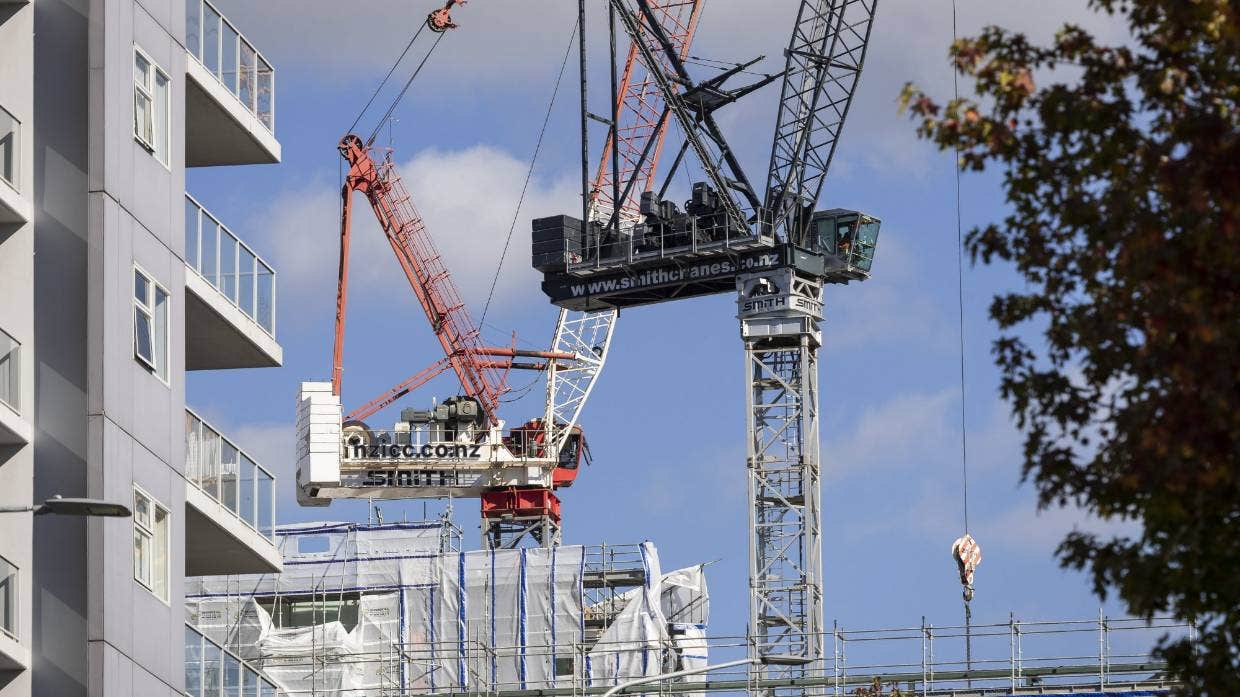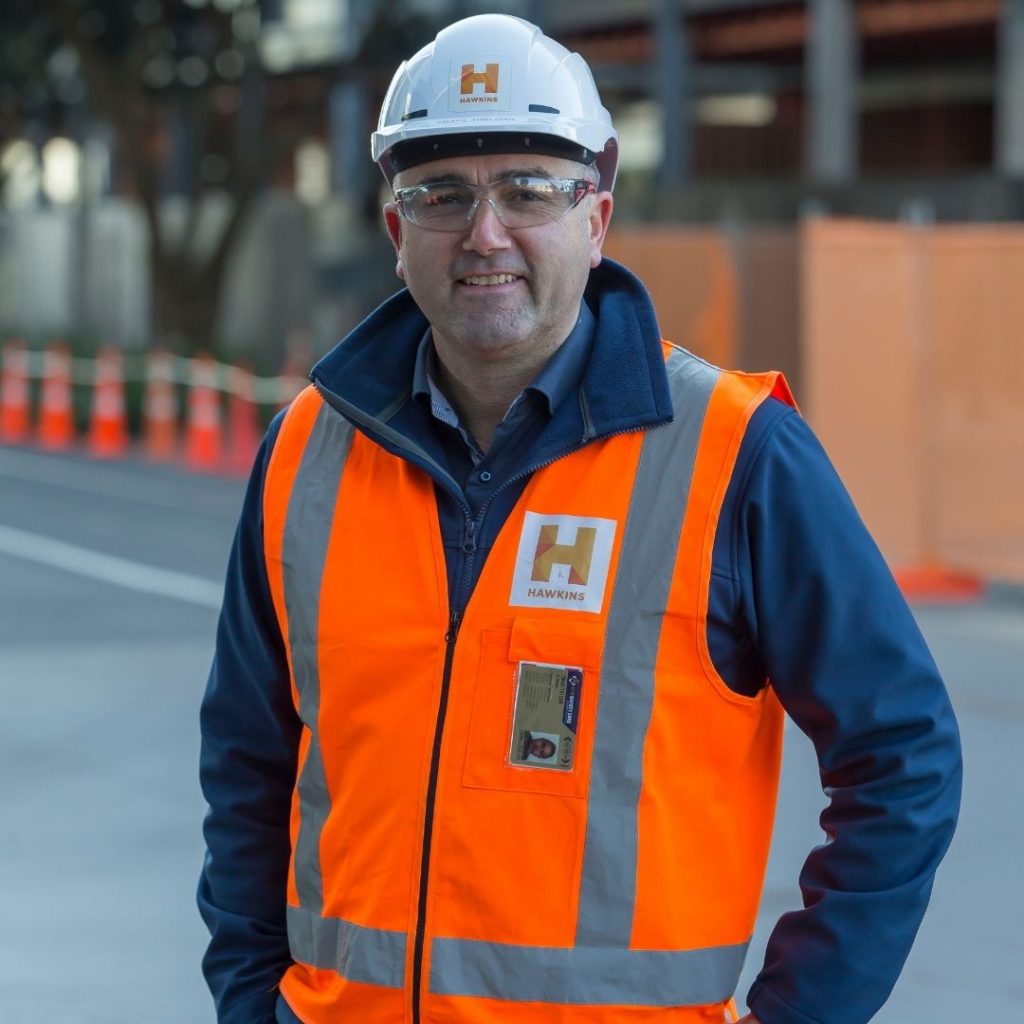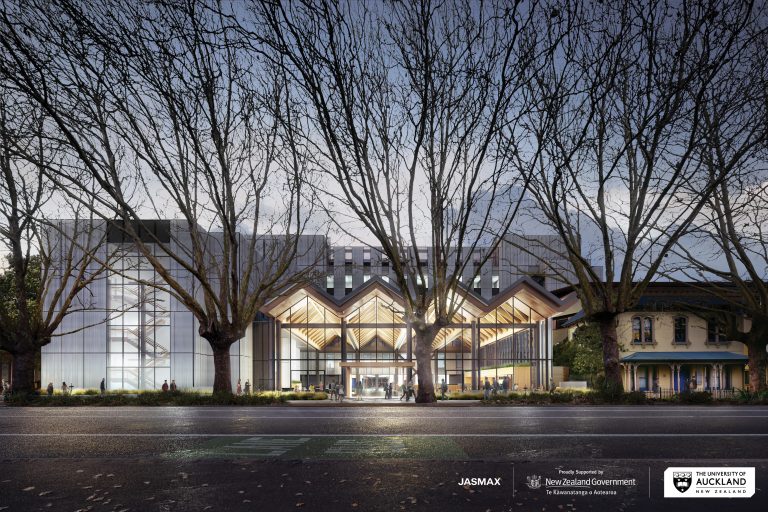- NZ tipped to be 118,500 construction workers short by 2024: Te Waihanga Infrastructure Commission
- Apprentice numbers growing, but it takes years to train people for mid-level jobs
- Staffing shortages to remain a “significant” problem across NZ businesses
As soon as the borders began to reopen, Craig Treloar, head of building projects at Hawkins, was off to the United Kingdom.
But instead of heading overseas to find his own fortune, he was seeking people to come and work on the pipeline of projects the construction firm has on its books.
“We went in March to the UK, I think we were one of the first companies to go to the UK on a drive,” Treloar said.
The visit was a chance to recruit people for roles such as quantity surveyors, engineers and project managers.
READ MORE:
* Rate hike by Reserve Bank to 2% looms after 3.2% jobless rate and 3% wage inflation
* New multimillion-dollar children’s hospital in Wellington may open without enough doctors
* The rise and rise of building tradies
The median project manager salary in New Zealand was $105,000 a year, according to NZtalent.com, and ranged up to $138,600, while the median annual pay for quantity surveyors was $95,000, and up to $133,000.
In general UK salaries were fairly similar for the roles being offered in New Zealand. “Some expectations were a little out, but we carefully managed those,” Treloar said.

New Zealand is forecast to be 118,500 construction workers short by 2024.
About 55 or 60 people were interviewed, and the company had made offers to about 30 people.
The company had recruited out of the UK for 15 years, with some people staying and moving up the ladder. The people signing up wanted the New Zealand lifestyle and to progress their career, he said.
The company had done recruitment drives in the past in South Africa, and was looking at Canada as an option, but found the UK was the best option so far.
“The culture’s very similar to the UK, we find it’s better they can come in and settle in and find the New Zealand way of doing things, and then work their way up if that’s what they’re wanting to do.”
A lot of businesses were planning trips, he said, and recruiting overseas, for example through LinkedIn, and there was a lot of competition for talent.
“We were over there very early, certainly the people we’d talked to hadn’t been interviewed by anyone else at that point, but as the borders are freeing up there’s more and more of that happening.”
Hawkins was training and developing young people, and doing more internal promotions than Treloar had seen in 19 years with the business, but it took years to get people to the mid-level roles being recruited.
“We encourage all of our subcontractors to employ apprentices, and they’re certainly on board with that. Some contracts have a minimum amount that you need to have on board on the project, so I think that’s all helping in the numbers you’re seeing of apprentices growing,” Treloar said.
Craig Treloar, general manager of building projects at Hawkins, went to the UK in March in search of workers.
The Government is putting $230 million into its Apprenticeship Boost scheme, extending it to the end of next year, although it will halve the subsidy to employers taking on apprentices to $500 a month.
New Zealand is expected to be 118,500 construction workers short by 2024, Te Waihanga/New Zealand Infrastructure Commission said in a report in May. Construction was an industry with strong jobs growth since Covid hit, with business booming in the sector and skyrocketing numbers of people doing apprenticeships.
David Searle, chair of accounting firm Baker Tilly Staples Rodway, said “everybody is having staffing shortages at the moment”.
In a pre-Budget poll of 441 businesses by the company, 81% of those who responded were having some problems or acute problems finding staff, and 85% of them wanted immigration settings to be loosened.
”I think it is going to be a very significant issue in all industries for New Zealand businesses for the next little while.”
With unemployment at a record low and Kiwis travelling overseas again, the country needed to loosen its immigration settings to replace some of the one-way traffic heading out, he said.
There were a reasonable number of construction roles on Immigration NZ’s ‘Green List’ with a fast-track to residency, but they were at a high level and would not meet the need, Searle said.
Some clients were looking at ‘offshoring’ staff, a solution if they did not need to be physically based in New Zealand, but it would not work for an industry like construction and “it can’t be good for the country in the long term”.










